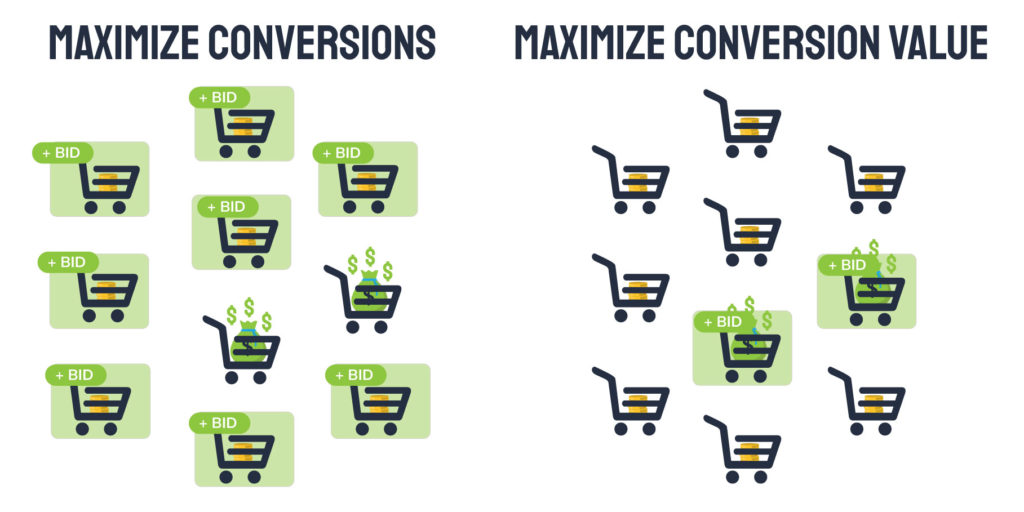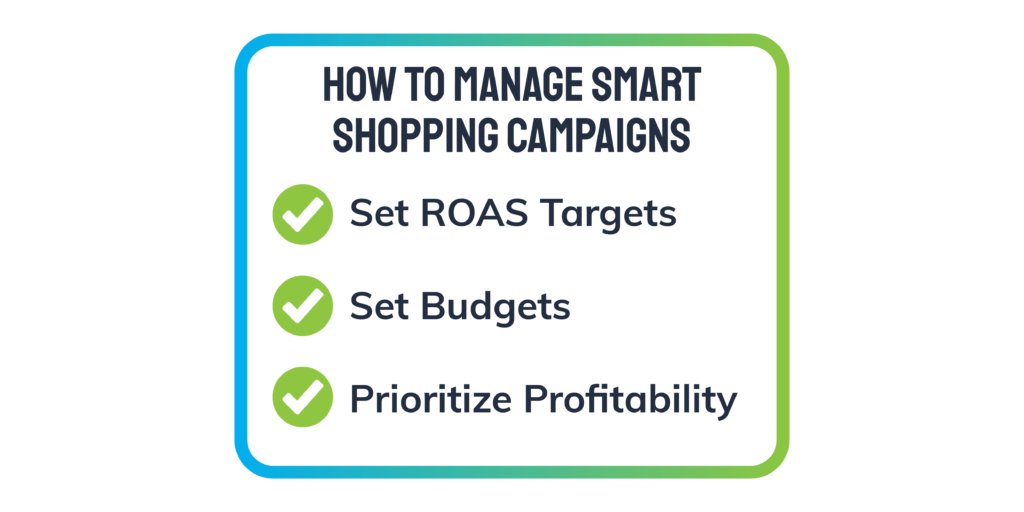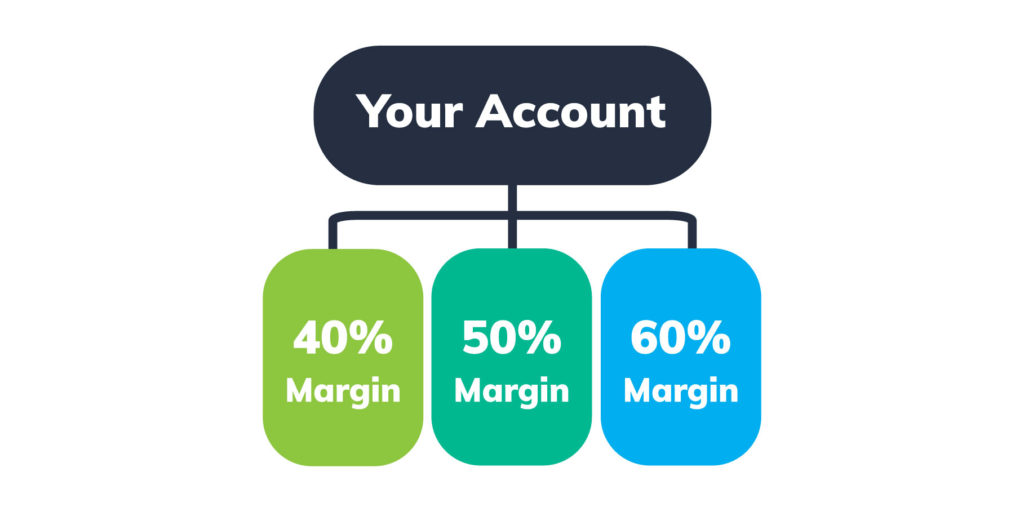If you’re trying to maximize your conversions, you may be thinking of testing out Google Smart Shopping Campaigns. Smart campaigns use “Maximize Conversion Value” bidding—but can they actually help you maximize conversions?
In this blog, we’ll discuss automated bidding for Smart Shopping campaigns and the best way to measure the success of your Smart Shopping campaigns overall.

Automated Bidding for Smart Shopping Campaigns
The only automated bidding strategy available for Smart Shopping campaigns is “maximize conversion value”. This type of bidding can only be applied at the campaign level and requires conversion tracking to use.
For Google Shopping standard campaigns, you can use “maximize conversions” to increase the number of actual conversions you get (within your budget).
Maximize Conversion Value bidding is a little different, though. Instead of trying to increase the number of conversions you get for your ad spend, Maximize Conversion Value bidding will try to bid on searches that result in the highest value conversions. Let’s look at an example.

Imagine there are 10 searches that you bid on.
Maximize Conversions will bid on the searches that are likely to convert, even if they are low value. Out of the 10 search, 8 are low value, but likely to convert.
Maximize Conversion Value, on the other hand, will bid on searches that have the highest conversion value. Two of the 10 searches are high-value conversions, so it will automatically bid on these searches and ignore the other low value searches. As you can see, this type of bidding doesn’t aim for the highest number of conversions—just the highest value.

Managing Maximize Conversion Value Bidding for Smart Campaigns

To manage Maximize Conversion Value bidding, you can set ROAS targets just as you would for Target ROAS bidding to retain some control over the automation. Budgets are also critical because Google will spend what budget is available.
Just because Google maximizes your conversion value does not mean that your campaigns will be profitable. Google could spend a lot to maximize the value of your conversions, only for you to ultimately end up in the red (or close to it) after accounting for cost of goods and ad spend.
To avoid this mistake, you must prioritize profitability when running Maximize Conversion Value Smart Shopping campaigns. Let’s take a look at how to measure success and stay profitable while running Smart Shopping campaigns.

How to Measure the Success of Your Smart Shopping Campaigns

Smart Shopping campaigns may help you maximize conversions—but it is more likely they will help you maximize the value of your conversions. Just because you get a lot of conversions, however, doesn’t mean that your campaigns will be profitable.
The real key is to maximize conversions while maintaining the optimum rate of profit. To do so, understand your cost of goods and the impact of your ads on your revenue.
The best way to incorporate cost of goods into your Shopping campaigns is to segment your products according to available margin. This means, segmenting your products by how much is left after costs are accounted for. This will let you know how much you can spend per segment while still remaining profitable.
To learn how to set up and segment your Smart Shopping campaigns like this, check out our white paper: How to Build Profitable Smart Shopping Campaigns. In this white paper, you will learn how to set up Smart Shopping campaigns to drive conversions while maximizing profit.

It's About More Than Just Maximizing Conversions — Profit is the Key
Smart Shopping campaigns do not give advertisers the option to maximize conversion—only the option to use maximize conversion value bidding. This type of bidding will try to bid on searches that will result in the most value for your business—not the most conversions.
Aiming to maximize conversions or conversion value, is not the best path to successful Smart Shopping campaigns, though.
Instead, you should try to maximize profit by accounting for cost of goods sold across your products. Then you will know how much you can bid to remain profitable. After you have set up this campaign structure, you can manage your campaigns to increase conversions, while maintaining your profit-driven strategy.
If you need help setting up a profit-driven strategy across your Smart Shopping campaigns, don’t hesitate to reach out to speak with an Omnitail analyst today. Let’s discuss your goals for Google Shopping and find out which type of campaign will help you reach your goals.









